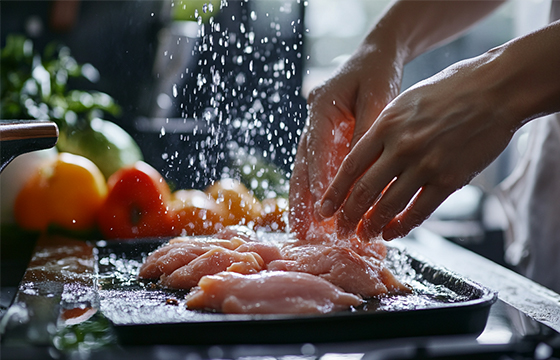Properly Handling Raw Chicken and Why Washing It Is a Bad Idea

Should You Wash Chicken?
NO! Do not washing chicken (or any raw meat) to prevent spreading harmful bacteria. Rinsing chicken in the sink can cause bacteria to splash onto surfaces, spreading up to 3 feet around the sink. This can contaminate countertops, kitchen towels, and even raw food, posing a serious risk to any food that’s served raw, like salads.
If you're concerned about the packaging juices, simply pat the chicken dry with a paper towel while it's still in the packaging, rather than rinsing it. This way, you prevent bacteria from spreading and avoid cleaning a cutting board. Plus, drying the chicken helps seasoning stick and promotes better browning when cooking.
Handling Raw Chicken
- Food safety starts right when you unpack your groceries. Always store raw chicken on the lowest shelf in the refrigerator or freezer to prevent its juices, which can carry bacteria, from contaminating other foods. It’s best to keep it in the disposable plastic bag it came in. The USDA recommends refrigerating raw chicken immediately at 40°F or below and using it within 1–2 days. If you're not cooking it right away, freeze it at 0°F.
- Use separate cutting boards for raw chicken and vegetables, and sanitize the chicken board thoroughly afterward. If you're using one cutting board, prep non-raw foods first to avoid contamination. Be sure to wash your hands and utensils after handling raw chicken.
- When moving cooked chicken, always use a separate clean plate, never the one that held the raw meat. The same goes for tongs or spatulas!
- To check if the chicken is fully cooked, use a clean digital thermometer and insert it into the thickest part of the chicken (without touching the bone). It should reach 165°F. Judging by color isn’t reliable. Don’t forget to wash the thermometer after use.





